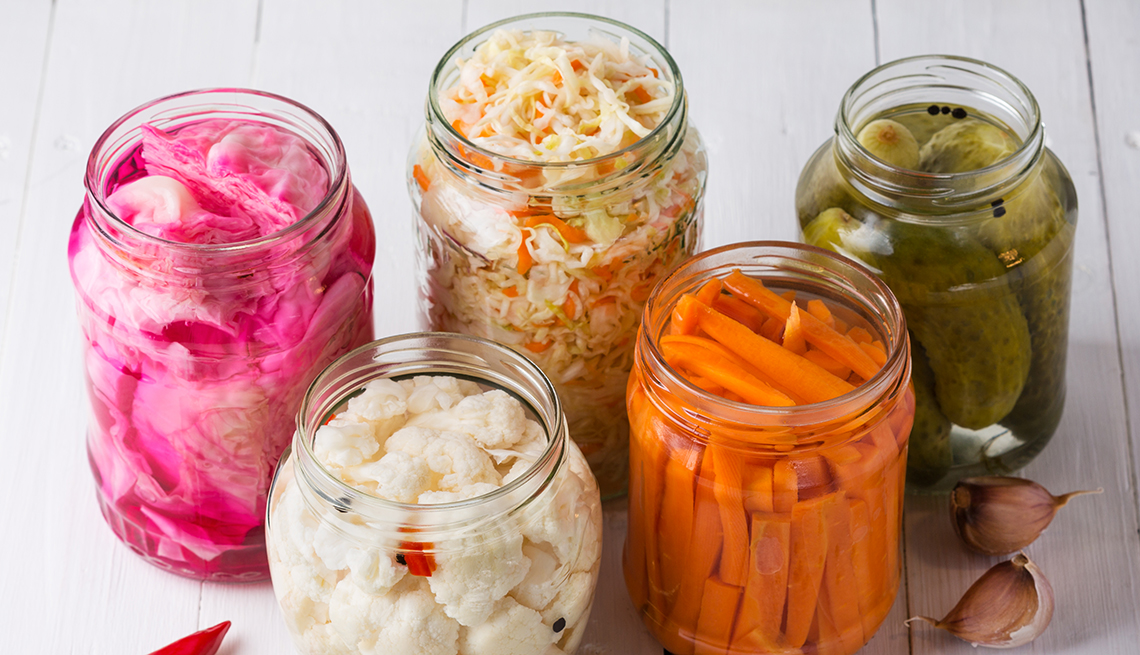AARP Hearing Center
Deep in your digestive system, 39 trillion “bugs” are hard at work 'round the clock keeping you healthy. “You have a rainforest inside you,” says Jack Gilbert, a University of California San Diego professor and microbiome researcher. “It’s incredibly complicated and incredibly connected.”
It’s true. Your gut microbiome has important body-wide effects. The complex community of bacteria and other critters in your intestines break down food and churn out chemicals that keep your bowels regular, tune up immunity, help regulate body weight, blood sugar and blood fats, tamp down inflammation, influence your moods and may even play roles in thinking and memory, according to recent research. A diverse gut microbiome has been linked with a longer, healthier life in a headline-grabbing 2021 study of 4,560 adults ages 18 to 98 from the Institute for Systems Biology in Seattle.
No wonder taking care of gut health has become a national obsession. Sales of probiotic supplements that promise to deliver good bacteria to your gut topped $800 million in 2020, while sales of “prebiotics” — indigestible fibers that gut bugs thrive on — have doubled every year since 2016. Probiotics and prebiotics are turning up in gut-friendly fortified chocolate, snack bars, soda, oatmeal, peanut butter, dried fruit and breakfast cereal. Intestinal “cleanses,” special diets and at-home microbiome stool tests promise to bolster gut wellness, too.
But most of the time, you don’t need these pricey products to promote gut health, says microbiome researcher Joseph Murray, M.D., a gastroenterologist at the Mayo Clinic in Rochester, Minnesota. “Eat real food,” he says. “Probiotics are probably pretty safe, but very few studies show robust benefits.” What new science does show is that your inner zoo loves the simple life — healthy foods and smart habits proven in recent studies to support a diverse gut microbiome and the real-world benefits of a healthy gut.
Happy microbiome, healthy you
Your microbiome can’t be seen, but sometimes it can be heard. You’ve likely had to stifle the excess gas they burp out when chomping on fiber from that bean burrito you had for lunch, for instance. But beneficial gut bacteria churn out other compounds with big benefits including:
- Short chain fatty acids (SCFAs), which can slip into the bloodstream and travel to the liver and to tissues throughout the body, playing roles in appetite, feelings of satisfaction after eating, blood sugar absorption and how the body uses cholesterol. Other SCFAs stay in your intestines, where they can help kill off colon-cancer cells and help lower inflammation in the gut.
- Indolepropionic acid, which mops up cell-damaging compounds called free radicals and may lower risk for type 2 diabetes.
- Neurotransmitters like serotonin and GABA (gamma aminobutyric acid), which may explain links between the microbiome and depression. It’s not just your brain that produces these feel-good chemicals, Gilbert says. “A healthy gut microbiome will have a lot of bacteria that produce GABA, which in the intestines helps the gut nervous system regulate gut peristalsis, where the gut contracts and pushes food down the intestines. That helps keep you regular,” he says. But GABA also controls the way brain cells communicate. It may not be a coincidence that gut-health problems like constipation and diarrhea often come along with depression, he says.
Overall, a diverse microbiome is a good thing, says Hannah Wastyk, a former Stanford University gut-bug researcher now studying the microbiome’s potential to treat inflammatory disease. “A healthy microbiome has 250 to 300 different species of bacteria,” she says. “Low would be 70 to 80 species.” In people, low diversity has been associated with inflammatory bowel disease, psoriatic arthritis, type 1 and 2 diabetes, obesity and arterial stiffness. Diversity means a wider variety of beneficial bugs — including backups if something happens to one type, Murray says. “Each of us has a unique microbiome,” he says. “Some is from what we eat, some of it is from our mother, some is genetics, some is the result of bad things we do to it, such as antibiotics that may kill bacteria that are our friends in that community.”




































































